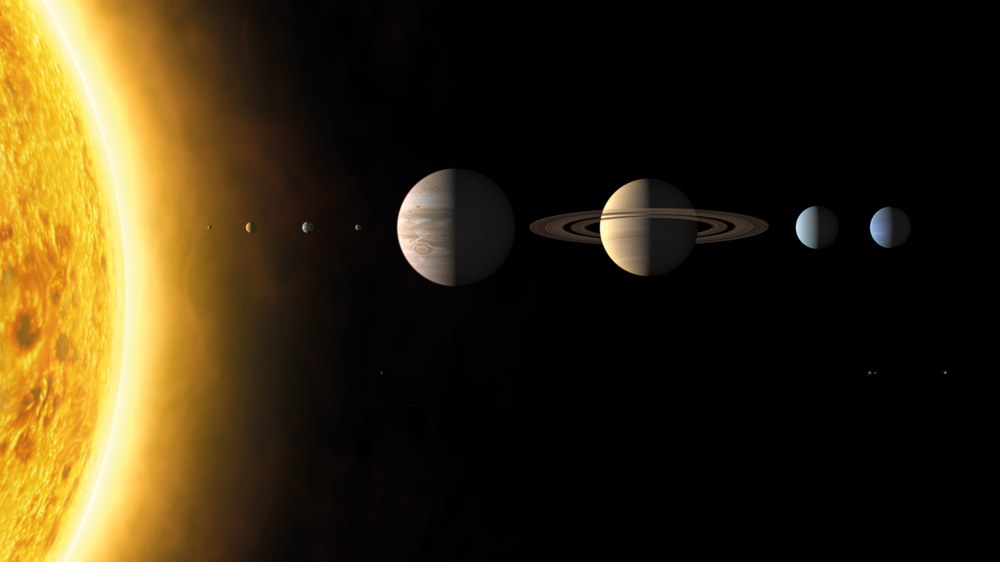Planets and Moons in the Solar System

The Solar System is our immediate neighborhood and its planets and moons have shared the same astrophysical environment, e.g., experienced the same evolution of our central star, the Sun. Nevertheless, their appearance is very different, caused by their different evolutionary histories. In particular, investigating the evolution of the inner bodies, Mercury, Venus, Mars and the Moon, will not only extend our understanding of these interesting objects themselves, but will furthermore allow us to better understand processes acting also on Earth. In the outer Solar System, the gas and ice planets with their moons are bodies very different to our own. Nevertheless, they are crucial to understand better the formation and evolutionary history of the Solar System.
Research activities in this cross-sectional theme focus on planetary surfaces and interiors, but also include studies of planetary atmospheres. Data processing of imaging cameras and laser altimeters result in, e.g., shape models, digital terrain models and cartographic maps. Remote-sensing investigations of mineralogical and geochemical surface compositions are complemented by laboratory analysis. Planetary interior processes are studied by state-of-the-art numerical simulations addressing the thermo-dynamical interior evolution of the terrestrial planets. Recent research activities include the interaction of interior and atmosphere processes to learn more about the evolution of habitability on Earth and planets in general as well as atmospheric models required e.g., to interpret available data and better understand central atmospheric processes.
Hardware developments and instrument operations in the context of this theme include, e.g., the HRSC camera on Mars Express, the JANUS camera on JUICE, laser altimeters (BELA and GALA) on BepiColombo and JUICE, contributions to PanCam on ExoMars as well as the MERTIS spectrometer on BepiColombo for surface mineralogy. A heat flow experiment and a radiometer were part of NASA’s InSight geophysical lander. A radiometer for JAXA’s MMX mission to the Martian moons is currently under development as well as for a mission in NASA’s CLPS programme to the Moon. Both NASA and ESA recently selected space missions to investigate our sister planet Venus. The institute will, together with its partners, contribute infrared spectrometers to NASA’s VERITAS mission as well as to ESA’s EnVision orbiter.
